Ministry of Statistics & Programme Implementation
Release of SDG publications on the occasion of 18th Statistics Day celebrated on 29th June 2024
प्रविष्टि तिथि:
30 JUN 2024 4:29PM by PIB Delhi
On the occasion of 18th Statistics Day, on 29th June 2024, the Ministry of Statistics and Programme Implementation released the following publications on Sustainable Development Goals (SDGs):
-
- Sustainable Development Goals – National Indicator Framework Progress Report, 2024
- Data Snapshot on Sustainable Development Goals – National Indicator Framework, Progress Report, 2024
- Sustainable Development Goals – National Indicator Framework, 2024
2. Endorsing India’s commitment to implement the Sustainable Development Goals (SDGs) while responding to national priorities, the Ministry of Statistics and Programme Implementation has developed the National Indicator Framework (NIF) for SDGs, in consultation with concerned Ministries/ Departments, UN Agencies and other stakeholders, to facilitate monitoring of the SDGs at national level. Based on the updated SDGs-NIF, every year on Statistics Day (i.e., on 29th June) MoSPI releases the Progress Report on SDGs with time series data along with two more SDG publications which are derived from the progress report.
3. In this series, the MoSPI released the following publications on 29th June, 2024 on the occasion of Statistics Day, 2024:
(i) Sustainable Development Goals – National Indicator Framework Progress Report, 2024
The report presents the time series data on the SDG national indicators, received from the data source Ministries, which will be instrumental in monitoring the national-level progress of the 17 SDGs. SDG Progress Reports, released by MoSPI, serve as valuable tools for policymakers, planners, and other stakeholders. The report consists of four main sections:
(a) Overview and Executive Summary- The ‘Overview’ covers the background of SDG-NIF along with the role and steps taken by MoSPI for facilitating the monitoring of SDGs at the national level. ‘Executive Summary’ includes goal-wise summary highlights/ progress made during the period under reference.
(b) Data Snapshot presenting the data summary of the SDG national indicators.
(c) Metadata contains information on each indicator describing goal, target, level & type of disaggregation, mapping with global indicator, unit of measurement, link/source(s) of data availability etc.
(d) Data Tables presenting time series data on the indicators, wherever available. The data can be downloaded in MS Excel format.
- Data Snapshot on Sustainable Development Goals – National Indicator Framework, Progress Report, 2024 is a derived report, in handbook form, from the Sustainable Development Goals – National Indicator Framework Progress Report, 2024, providing national level time series data for the SDG indicators.
- Sustainable Development Goals – National Indicator Framework, 2024 is also a derived report, in handbook form, from the Sustainable Development Goals – National Indicator Framework Progress Report, 2024, encompassing all the national SDG indicators along with its data source and periodicity. The report consists of 290 national SDG indicators.
4. These reports on SDGs are readily accessible to the public and can be obtained from the MoSPI website (www.mospi.gov.in).
Highlights of the Sustainable Development Goals – National Indicator Framework Progress Report, 2024
The SDGs NIF serves as the backbone for monitoring SDGs at the national level, offering valuable guidance to policymakers and the implementing agencies of various schemes and programs. The major data sources for these SDG national indicators are administrative data, surveys and censuses. Primarily secondary data from concerned line Ministries is used for the compilation of the indicators.
- Some of the highlights from the SDG NIF progress report 2024 are:
|
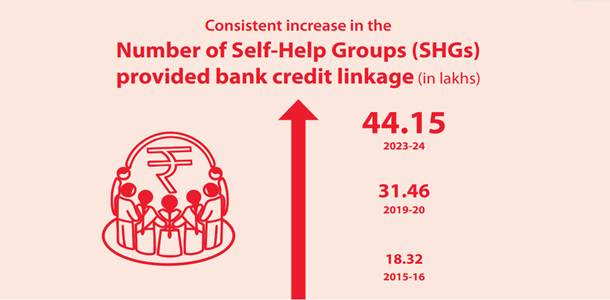
|
|
The Number of Self-Help Groups (SHGs) provided bank credit linkage has increased from 18.32 lakh in 2015-16 to 44.15 lakh in 2023-24
|
|
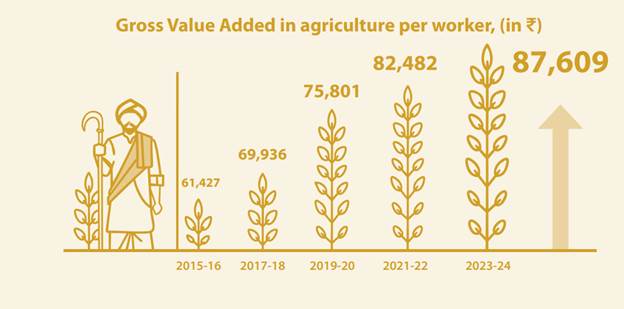
|
|
Gross Value Added in agriculture per worker (in ₹) has increased from 61,427 in 2015-16 to 87,609 in 2023-24
|
|
|
|
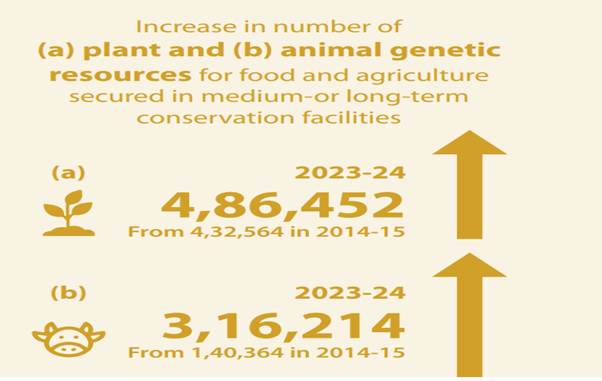
|
|
Number of (a) Plant and (b) Animal, genetic resources for food and agriculture secured in either medium- or long-term conservation facilities has raised from (a) 4,32, 564 in 2014-15 to 4, 86, 452 in 2023-24 (b) 1,40,364 in 2024-25 to 3,16,214 in 2023-24
|
|
|
|
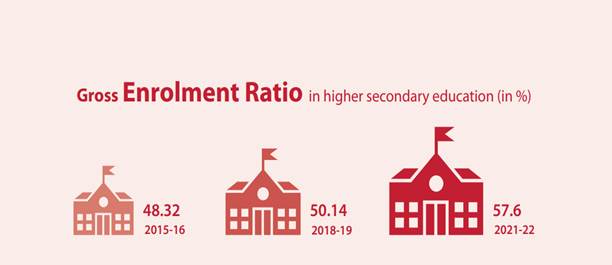
|
|
Gross Enrolment Ratio in higher secondary education has increased from 48.32 in 2015-16 to 57.60 in 2021-22
|
|
|
|
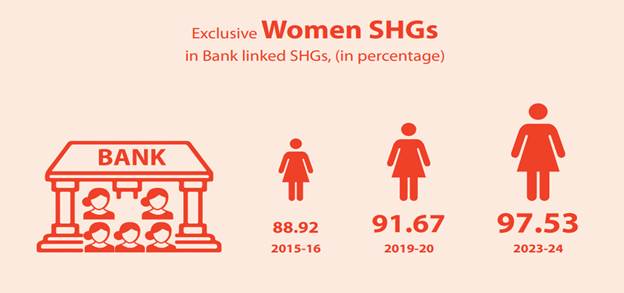
|
|
Exclusive women SHGs in Bank linked SHGs has increased from 88.92% in 2015-16 to 97.53% in 2023-24
|
|
|
|
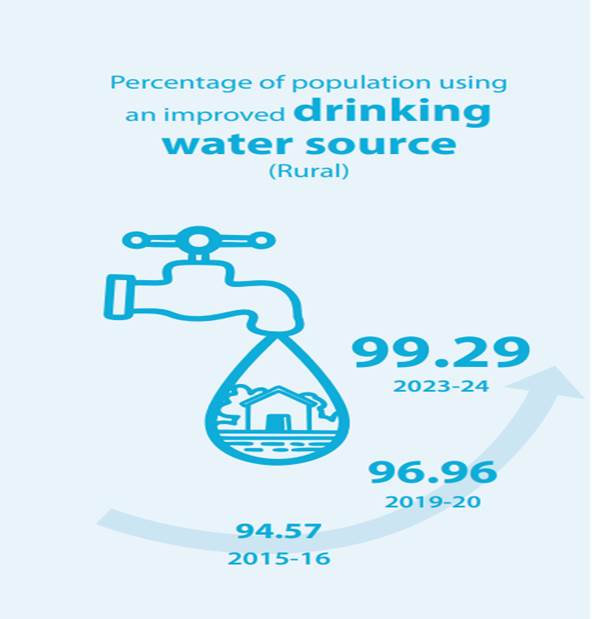
|
|
Percentage of population using an improved drinking water source in rural areas has increased from 94.57% in 2015-16 to 99.29% in 2023-24
|
|
|
|
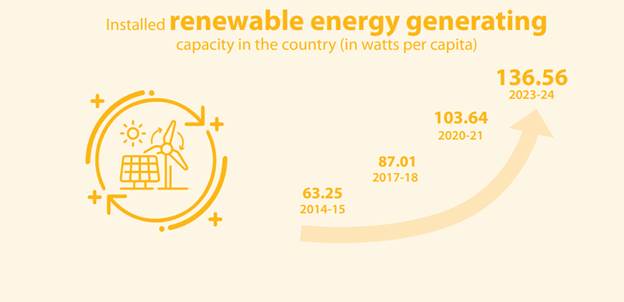
|
|
The installed renewable energy generating capacity in the country has shown a steady increase in value from 63.25 watts per capita in 2014-15 to 136.56 watts per capita in 2023-24
|
|
|
|

|
|
The number of patents issued (granted) has increased from 6,326 in 2015-16 to 1,03,057 in 2023-24
|
|
|
|
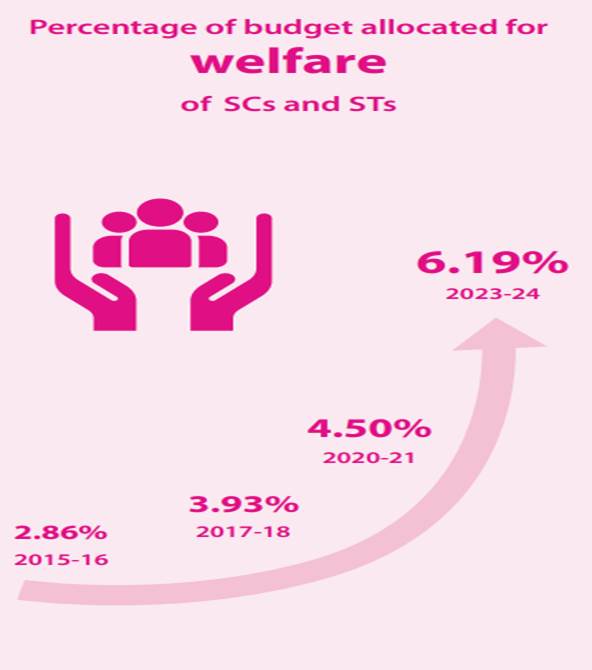
|
|
Percentage of budget allocated for welfare of SCs and STs has increased from 2.86% in 2015-16 to 6.19% in 2023-24
|
|
|
|
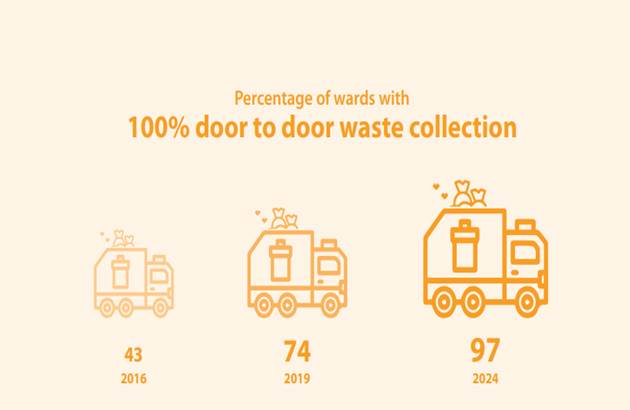
|
|
Percentage of wards with 100% door to door waste collection has increased from 43% in 2016 to 97% in 2024
|
|
|
|
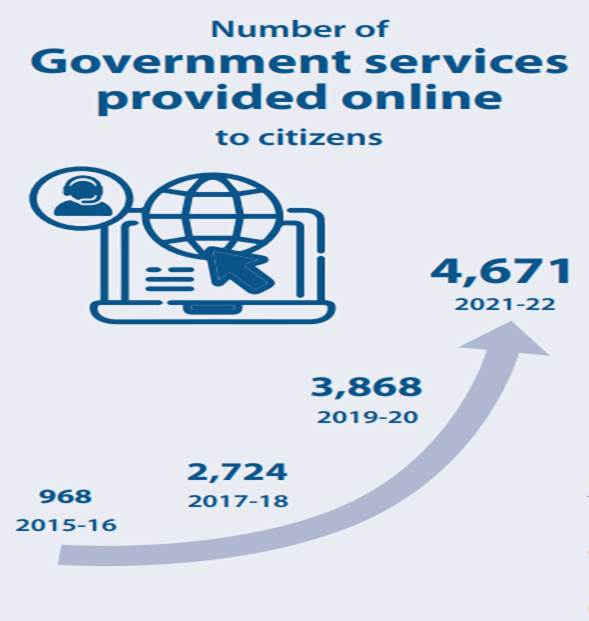
|
|
Number of Government services provided online to citizens has increased from 968 in 2015-16 to 4,671 in 2021-22
|
|
|
|
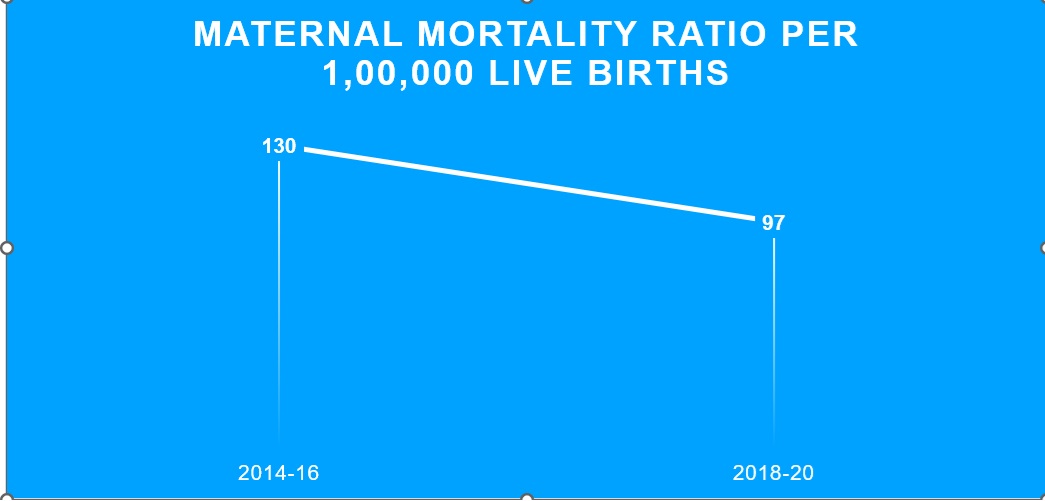
|
|
The Maternal Mortality Ratio has declined from 130 per 1,00,000 live births in 2014-16 to 97 per 1,00,000 live births in 2018-20
|
|
|
|

|
|
The Under-five mortality rate has declined from 43 per 1000 live births in 2015 to 32 per 1000 live births in 2020
|
|
|
|
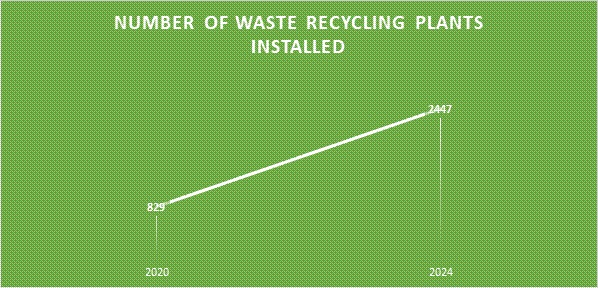
|
|
The number of waste recycling plants installed has increased from 829 in 2020 to 2447 in 2024
|
***
PK/SB
(रिलीज़ आईडी: 2029710)
आगंतुक पटल : 7649